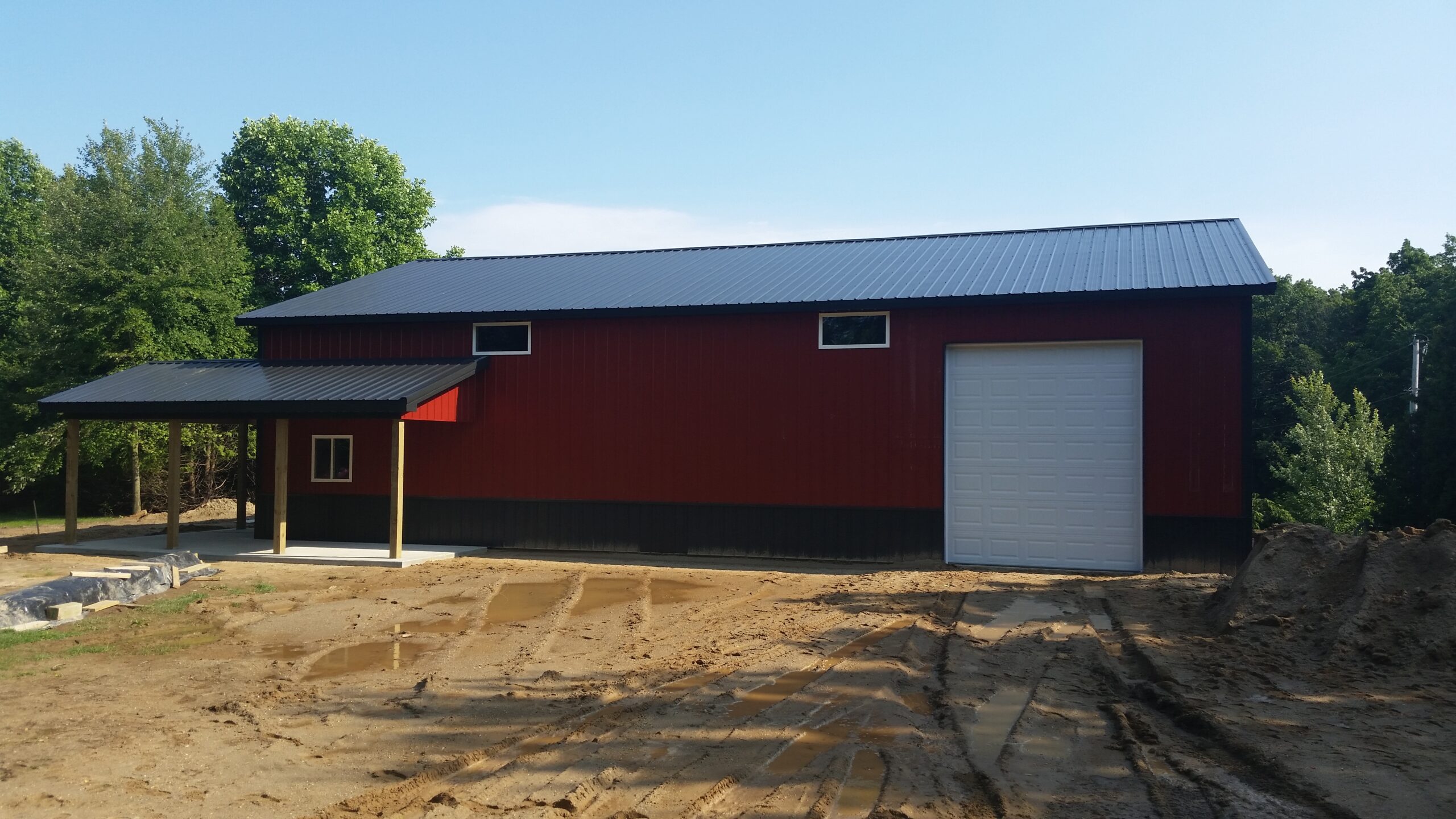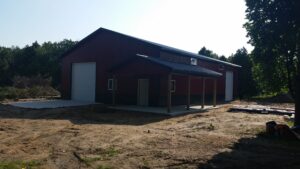
The red barn is an icon of rural America. These structures are one of the few that are distinctly American, borne from our earliest days in history. We adapted the European barn to serve our extensive livestock and agricultural needs. Today, new and historic barns serve many different purposes, remaining a strong part of rural American culture.
There are a couple of theories on why red is the predominate color of barns. Historically, barns were more of a dull orange red, not the bright red seen on barns today. The tint came from a linseed oil mixture used to seal barns after construction. Some farmers also added rust – ferrous oxide – to the solution to keep the barns from developing moisture and mold in the wood. The addition of rust to the mixture tinged it red.
 When farmers migrated to America, their old world practices in construction and sealing came with them. Many barns up until the 18th century were largely unpainted. They may have had a slight tint but were not purposefully stained or painted. During the late 1700s and 1800s, many early barns were painted with the red tinged oil mixture in old world tradition. The practice may have started in the Dutch community, which was known for their use of red. Dutch immigrants commonly chose red bricks, red plants, and reddish-colored cattle for their homes and communities.
When farmers migrated to America, their old world practices in construction and sealing came with them. Many barns up until the 18th century were largely unpainted. They may have had a slight tint but were not purposefully stained or painted. During the late 1700s and 1800s, many early barns were painted with the red tinged oil mixture in old world tradition. The practice may have started in the Dutch community, which was known for their use of red. Dutch immigrants commonly chose red bricks, red plants, and reddish-colored cattle for their homes and communities.
The color of Dutch barns, some of the oldest barn constructions in the world, eventually caught on in New England, and the practice of coating barns in the red, protective mixture spread across the United States. Many farmers during the 1800s and 1900s continued to use the traditional linseed mixture with skim milk, lime, and iron oxide until modern protective paints were developed for exterior use.
Some historians also theorize that the American Indian practice of staining interior surfaces with a mixture of blood and milk may have influenced the barn colors. However, the staining practice may not have been suitable for external structures like barns.
Today, while barn constructions are more versatile than the early barns of America, red painted barns are an icon across the Northeast and the Midwest. In keeping with tradition, these red barns often sit alongside a stark while farmhouse, providing a contrast against farmland. The early Dutch, Jamestown, and New England barn styles have given way to more modern structures designed for an individual homeowner’s needs. To get started on a red barn construction of your own, contact MilMar Post Buildings today.